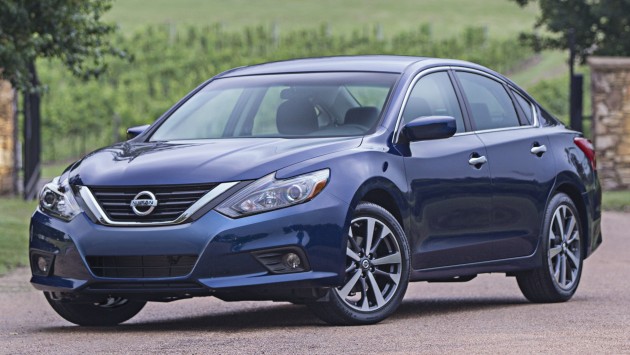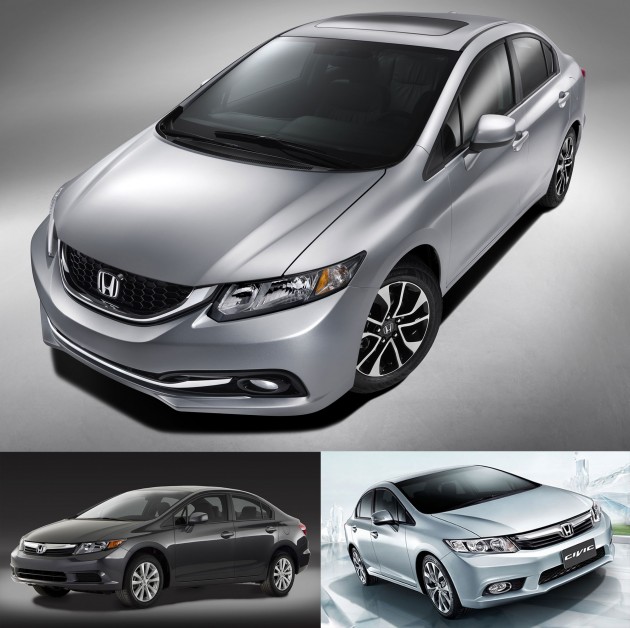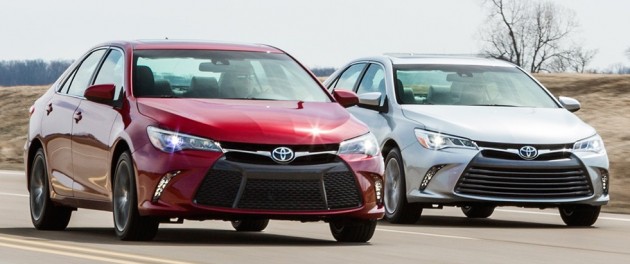It seemed only yesterday that a typical mid-life facelift amounted to nothing but slightly revised bumpers and rejigged trim levels, but fast forward to 2016 and a more thorough refresh is now the norm – in the United States at least – according to Automotive News.
Witness the revisions Nissan made to the Altima (known as the Teana here) and the Sentra (Sylphy) last year – the duo get completely revised front fascias, a retrimmed interior, upgraded infotainment systems, retuned engine and chassis as well as the addition of new active safety kit such as Forward Emergency Braking.
“We invested three to four times more than we typically would invest [in a mid-cycle update]”, said Nissan product strategy chief Pierre Loing. “The competition is getting stronger. If you want to remain there, you need to invest and show consumers you have a credible offer.”
The trend of developing more extensive facelifts began back in 2011 when Honda was stung by criticism regarding the then-new ninth-generation Civic‘s styling, build quality and handling – including Consumer Reports removing the car off its ‘Recommended’ list. This prompted it to release a comprehensive revision just one and a half years later to address these issues.
But it was the facelifted 2015 Toyota Camry that really got the ball rolling, with almost every exterior panel heavily revised to create a much more aggressive, youthful-looking machine, in line with president and CEO Akio Toyoda’s mission of adding more emotion to the company’s vehicles. Like the Altima and Sentra, there were updates to the interior trim, driving dynamics, technology and safety features, too.
Toyota also spent around three times more on this facelift than before, claimed the Camry’s chief engineer Monte Kaehr. “The 2012 Camry was doing well in the marketplace,” he said “We did research with customers and intenders to see what they appreciated and what needed to be approved.”
Kaehr added that while feedback suggested that the 2012 Camry “was very appealing from a rational standpoint,” it was not attractive emotionally, according to reviews.
These more frequent, larger-scale revisions are said to come as a result of vicious competition, tightening fuel economy regulations and the quicker pace that in-car mobile connectivity is becoming obsolete.
Milton Wong, chief engineer of the Ford Escape/Kuga – which also receives a makeover, including a new SYNC 3 infotainment system, for 2017 – said that facelifts are new opportunities to “deploy a lot of new technologies, or technologies already deployed on other vehicles.”
Former Ford vice president of product development and Chrysler vice president of platform engineering Chris Theodore noted that the notion of the facelift has changed over the years. “In the old days, facelifts were too modest, and the customer didn’t notice. They were probably US$10 million (RM43.5mil) to US$20 million (RM86.9mil) jobs,” he said, adding that he estimates facelifts nowadays could cost ten times that.
“The manufacturers have learned [a facelift] has to be much more than it used to be in the past. You have to give customers reason to come in and buy a new one,” he said.
Bank of America Merrill Lynch’s auto analyst John Murphy remarked on the trend in the annual “Car Wars” report last year. “As automakers emerge from the trough in the cycle, more are aiming to spur demand by launching fresh product rather than discounting stale models at the expense of margins,” he said, adding that average showroom age has been “on a steady decline since the early 1990s.”
Of course, it’s a different story over here – Malaysia never got the massive Civic refresh enjoyed in the US, sticking to a much more modest version amounting to a new grille, minor trim differences, added kit and the introduction of curtain airbags on 2.0 litre models. Our 2015 Toyota Camry, on the other hand, received much more significant changes, but still missed out on a total revamp in looks.
Looking to sell your car? Sell it with Carro.







>Red Camry
>Spent three times more
Toyota is made for Char Aznable. Sieg Zeon!
All this will only benefit the customers. We can only hope that the automakers in Malaysia will bring the extensive facelift improvements as seen in US to the models sold here rather than the minor tweaks we’ve been getting
When I got my Gen2 CPS, they call it facelift but only the body shell, drivetrain & fitting parts was carried over. With the new front & rear bodykit, CPS engine, stiffer springs & persona interior (with leather option), it was like a totally new car compared to 1st Gen Gen2.
Loser drive proton!
And those who have a early death wish drives a Toyota. Just dun bring me along with you, yeah.